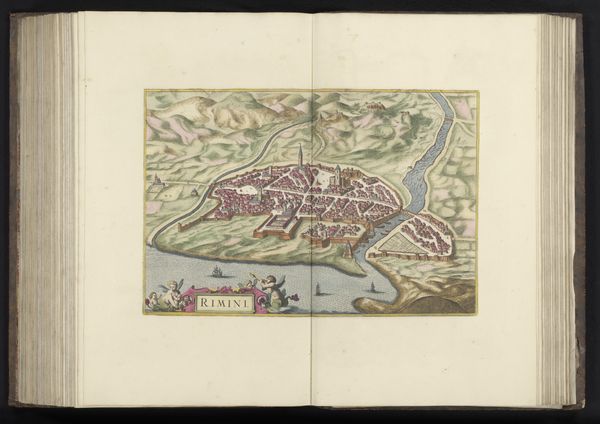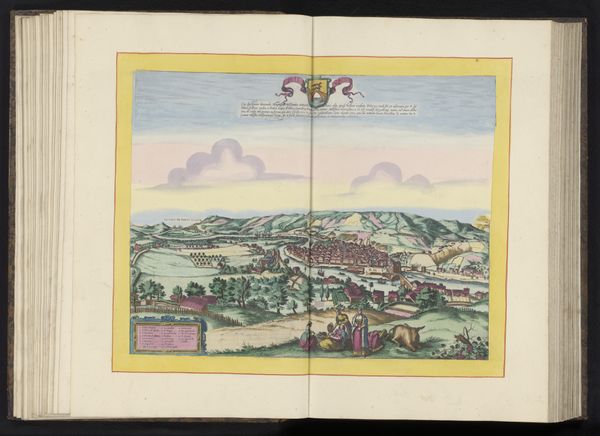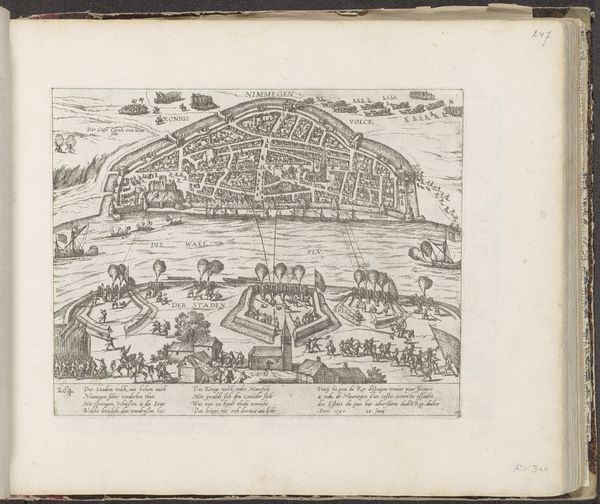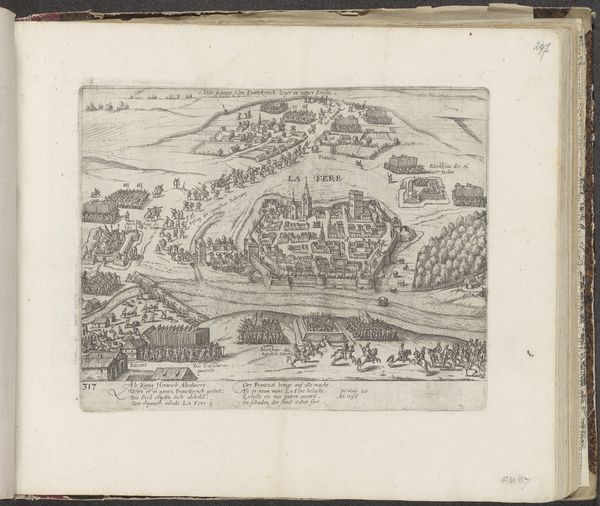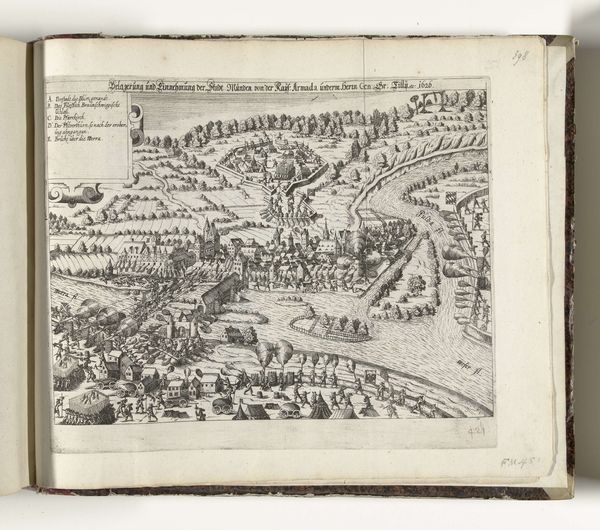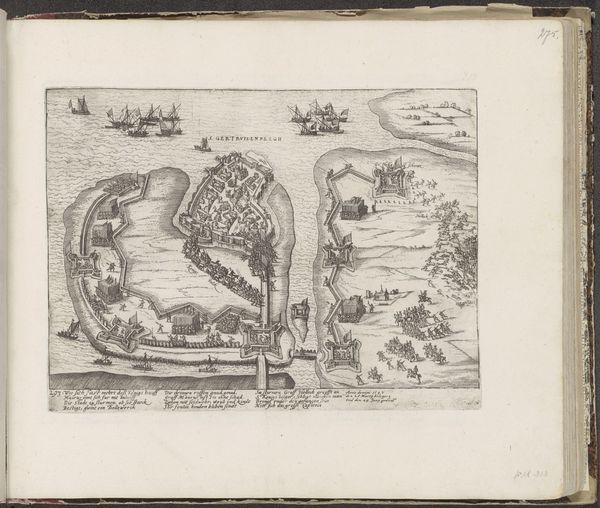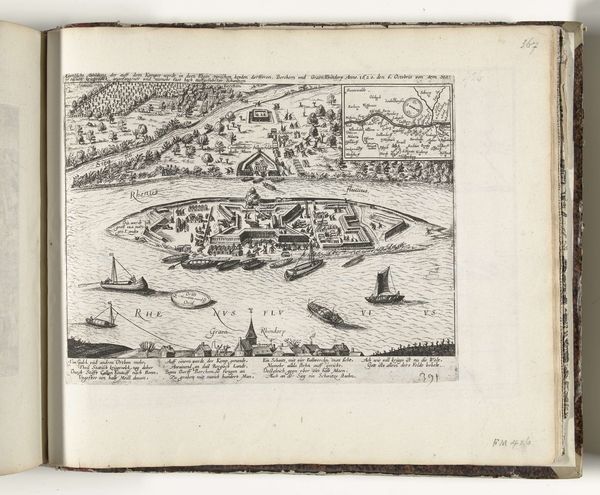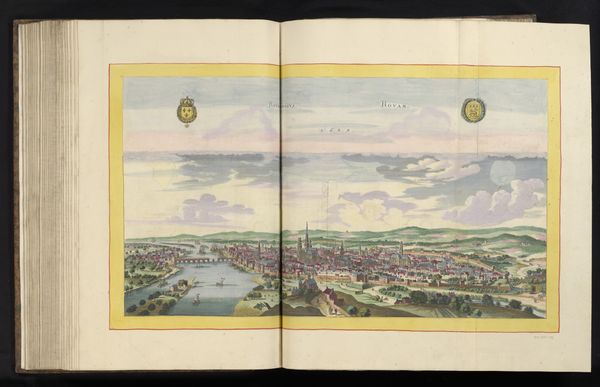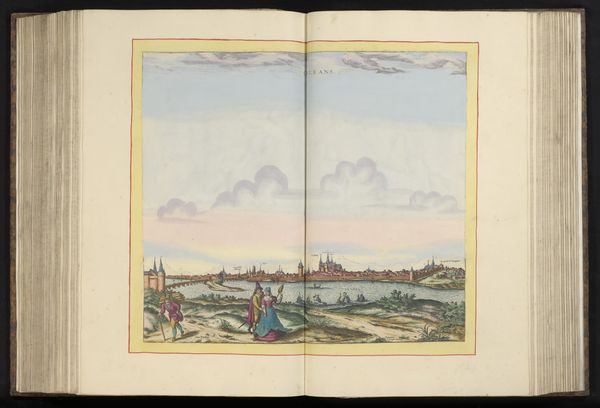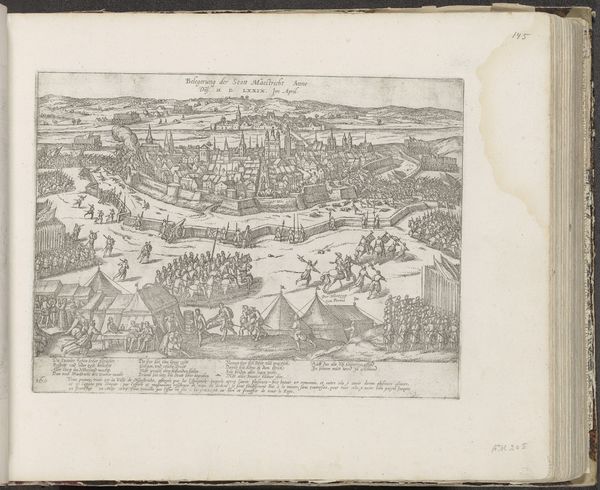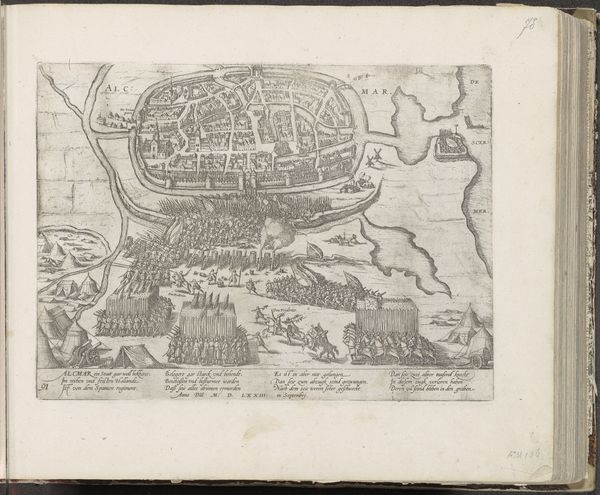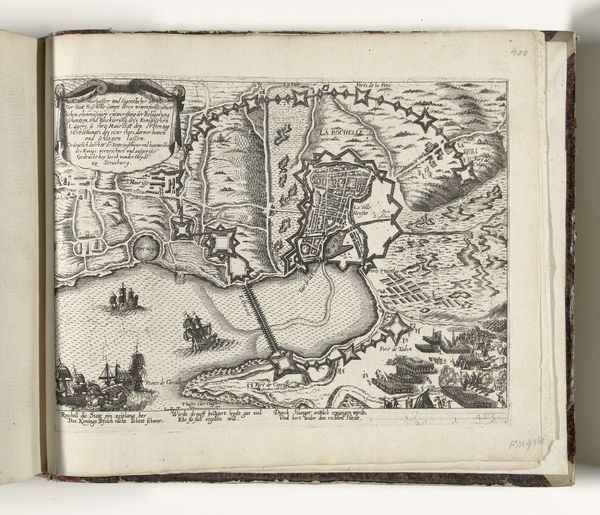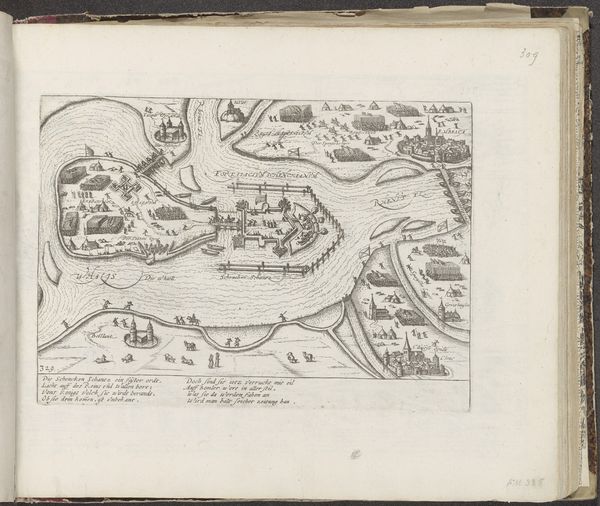
print, paper, engraving
#
baroque
#
ink paper printed
# print
#
landscape
#
paper
#
orientalism
#
ink colored
#
pen work
#
cityscape
#
engraving
Dimensions: height 356 mm, width 492 mm
Copyright: Rijks Museum: Open Domain
Curator: Let's turn our attention to "Gezicht op Mantua in vogelvluchtperspectief"—a bird's-eye view of Mantua, possibly dating back to somewhere between 1639 and 1717. It's a print of ink on paper and engraving. What strikes you most about this cityscape? Editor: The scale is instantly captivating. It reminds me of maps used for geopolitical strategy. You have this detailed panorama, but who held the power to view this city from above, to map it out with such specificity? Curator: It is tempting to interpret such cartography solely as tools of power. The city is portrayed surrounded by water, a familiar image linked with rebirth. Early depictions of landscape held significant meaning as the 'stage' upon which important events, religious or historical, played out. Is there anything familiar in its layout, any iconography that jumps out? Editor: The water immediately stands out as a powerful protective element, creating natural borders, defining access and trade. Thinking about historical segregation and restricted urban planning it makes me think about wealth distribution and its control in those times. This is not a painting of an ideal space. How does its layout correlate with the population it represents? Curator: What about the idealized depiction in itself? Does the print distort to communicate authority, to portray an image that would legitimize Mantua's structure, not as it was lived in practice, but as a symbol of power? The 'vogelvluchtperspectief' the perspective chosen offers more than documentation. Editor: Absolutely, it raises questions about accessibility to resources, infrastructure, and representation. Also, thinking of it being reproduced on paper, its relative availability speaks to a desire for this vision of control, of understanding what's at the edges of society, to filter back into a dominant ideology of how cities are planned and represented. Curator: An image for whom? And what continuities do we see in contemporary cityscapes today as a result of this representation? What is revealed by its deliberate gaze and focus, and also what might be subtly obscured? Thank you for highlighting those connections to the city today. Editor: Thanks, those questions really deepen the image's engagement for me, I think this cityscape will have a completely new meaning for me next time!
Comments
No comments
Be the first to comment and join the conversation on the ultimate creative platform.
